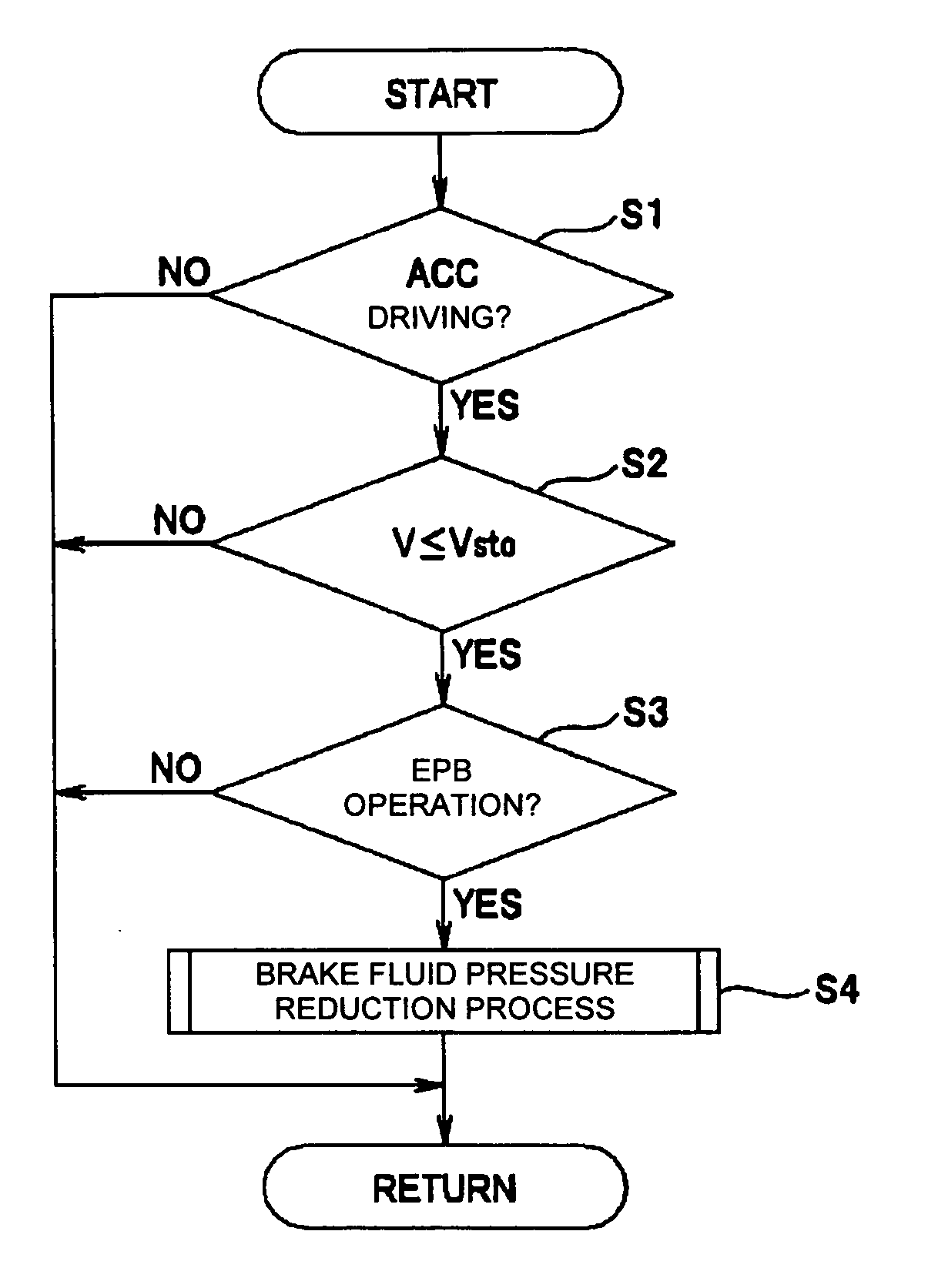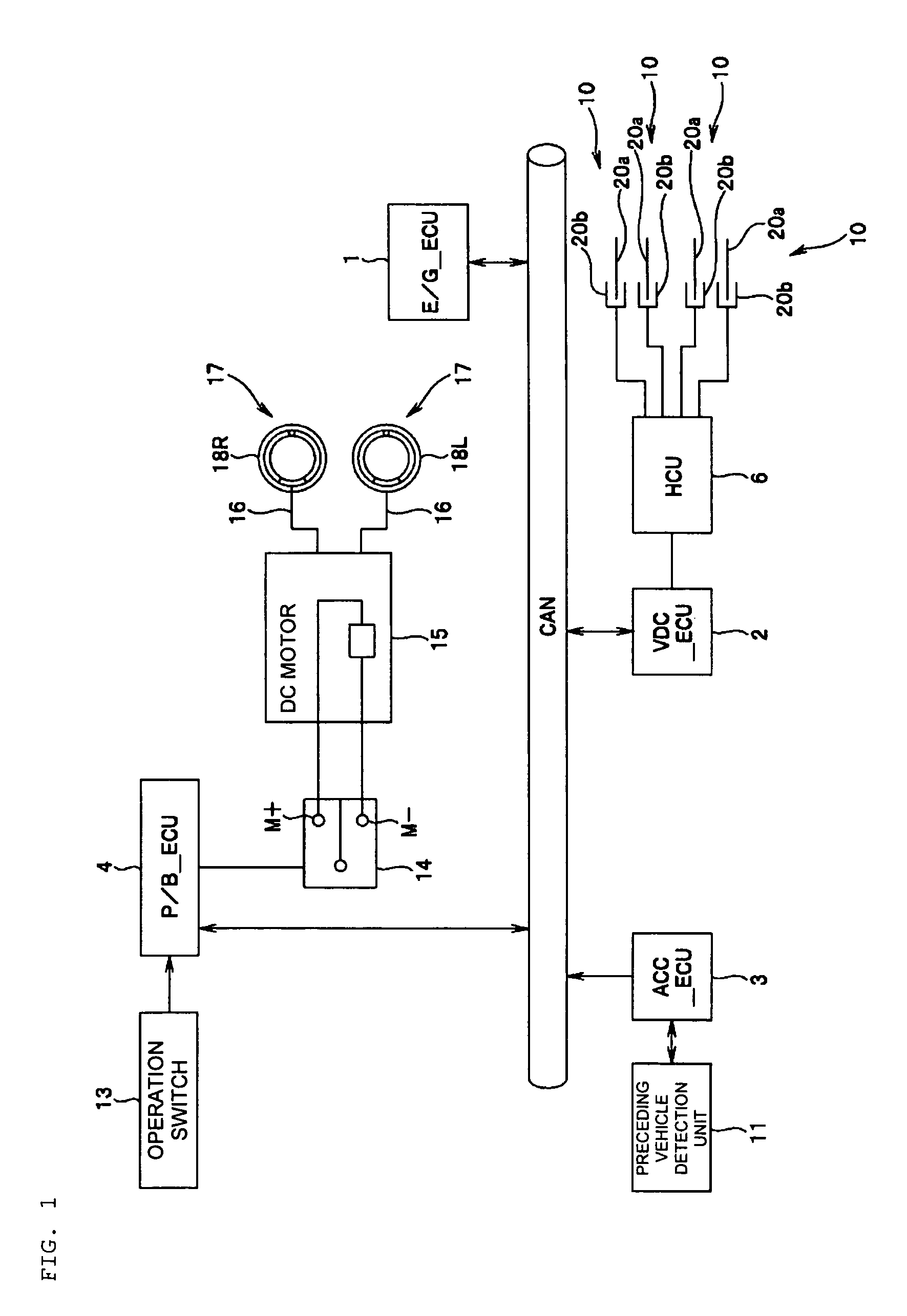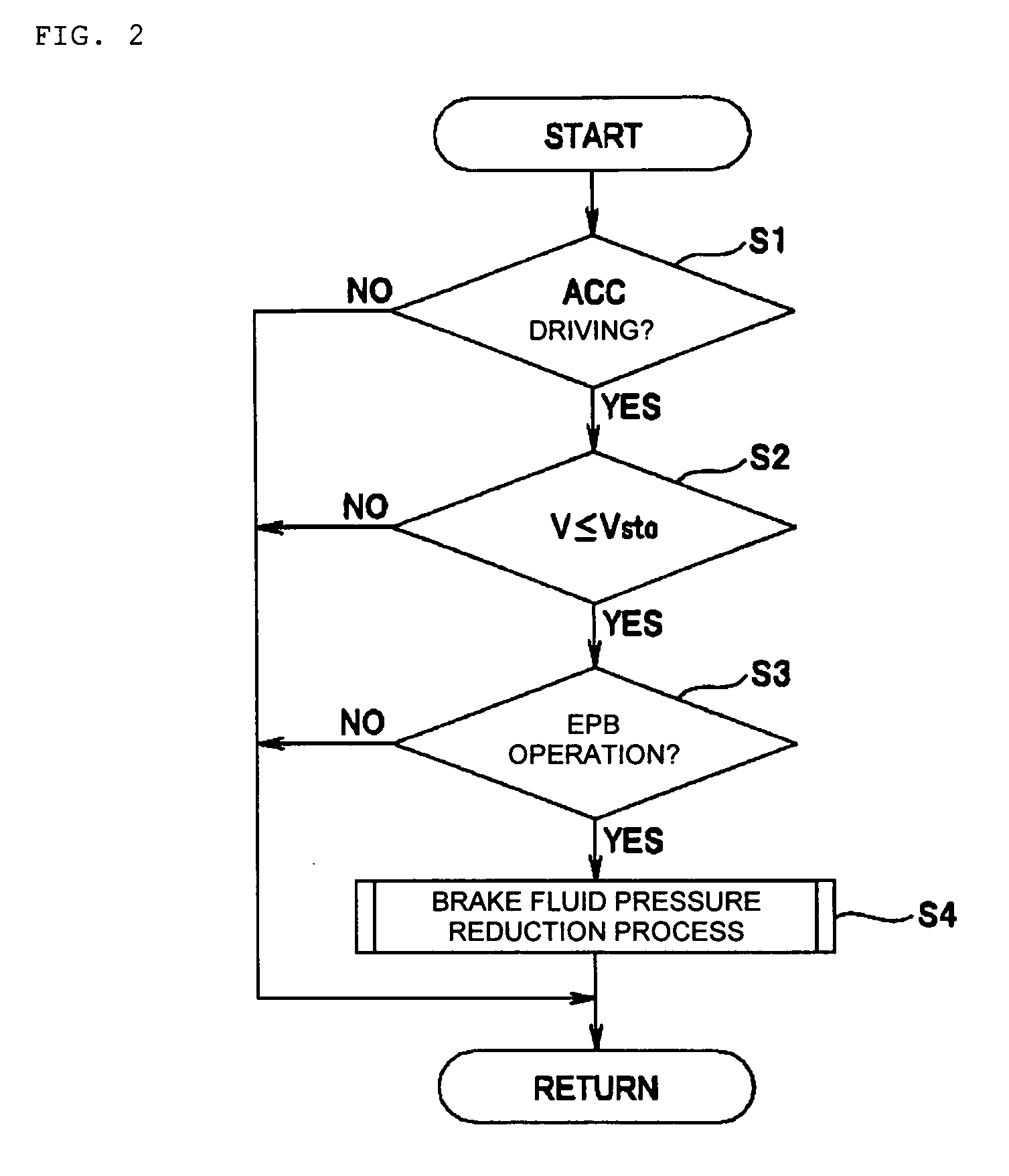Vehicular brake control apparatus
a technology for controlling apparatus and brakes, applied in vehicle position/course/altitude control, braking system, instruments, etc., can solve the problems of reduced follow-up responsivity, insufficient absorbance of shock applied to passengers, and inability to obtain preferable acceleration.
- Summary
- Abstract
- Description
- Claims
- Application Information
AI Technical Summary
Benefits of technology
Problems solved by technology
Method used
Image
Examples
Embodiment Construction
[0023]An embodiment of the present invention will be described with reference to the drawings. FIG. 1 shows a system configuration of a vehicle control apparatus.
[0024]A vehicle representing automobiles described in the present embodiment has various electrical control units which control driving conditions of the vehicle. FIG. 1 shows control units, among those various electrical control units, related to a vehicular brake control function described in the present embodiment, which are an engine control unit (E / G_ECU) 1, a vehicle dynamics control (VDC) unit (VDC_ECU) 2 serving as a main brake controller, an adaptive cruise control (ACC) unit (ACC_ECU) 3 and a parking brake control unit (P / B_ECU) 4 serving as an auxiliary brake controller. These ECUs 1 to 4 are mainly composed of microcomputers having a CPU, a ROM, a RAM, an input / output interface and the like, which are not shown, and the ECUs 1 to 4 are connected so as to communicate each other via a CAN (Controller Area Network)...
PUM
 Login to View More
Login to View More Abstract
Description
Claims
Application Information
 Login to View More
Login to View More - R&D
- Intellectual Property
- Life Sciences
- Materials
- Tech Scout
- Unparalleled Data Quality
- Higher Quality Content
- 60% Fewer Hallucinations
Browse by: Latest US Patents, China's latest patents, Technical Efficacy Thesaurus, Application Domain, Technology Topic, Popular Technical Reports.
© 2025 PatSnap. All rights reserved.Legal|Privacy policy|Modern Slavery Act Transparency Statement|Sitemap|About US| Contact US: help@patsnap.com



